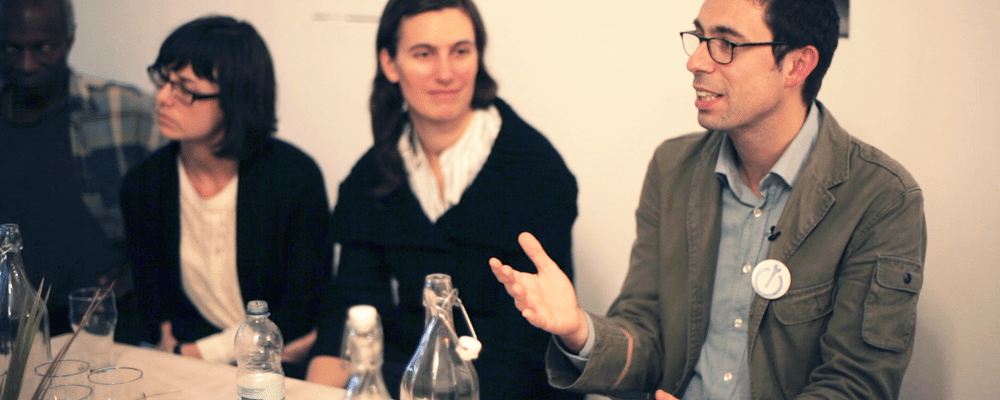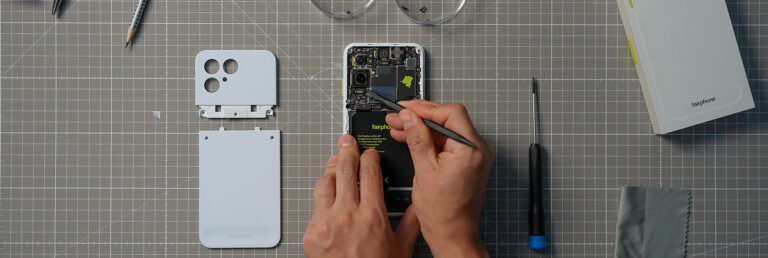Guest Blog: The Restart Project on FP Repairability
Editor’s Note: What’s the “repairability” of the first Fairphone? In this guest post, Ugo Valluari, co-founder of The Restart Project, discusses his team’s analysis and teardown of an early prototype. Keep in mind – within the constraints of our first-year funding model, we selected and licensed an existing design from our partner Changhong that already included some of our ideas for a more repairable phone. That let us concentrate in the selection of some sub-suppliers to accomplish other social interventions. For this phone, we’ll be providing a list of spare parts and a repair manual, and in the future, we want to go deeper and design our mobile phone from scratch, opening up the possibilities of a collaborative “Smart Design.”
 Two weeks ago The Restart Project ran a workshop during the Fairphone Pop-Up Shop as part of London Design Festival. We were invited to create a participatory event built around the latest prototype of the Fairphone.
Two weeks ago The Restart Project ran a workshop during the Fairphone Pop-Up Shop as part of London Design Festival. We were invited to create a participatory event built around the latest prototype of the Fairphone.
Our organization promotes a positive change in people’s relationship with electronics: regaining control of the devices we own, by learning to take them apart, troubleshoot them, repair them and prolong their life span. We do this primarily by running “Restart Parties,” where our growing network of volunteer “Restarters” (or repair coaches), share their skills with participants determined to repair their malfunctioning devices, preventing waste and actively rejecting planned obsolescence. When it comes to mobiles, our motto is that “the most ethical phone is the one you already have,” meaning that we should always try our best to make the most of the devices we have before thinking of upgrading.
Five Restarters took apart the Fairphone, sharing the experience with 15 other participants and a few Fairphone staff members, answering our questions as we made progress. Here is what we found out.
Ben, who led the process, noted that components are easy to fit and the layout is not confusing at all, even in absence of a guide for disassembly. He thought that most parts come off “as easy as a Lego,” which can’t be said of most other smartphones. The Fairphone uses only one size of screw – the standard Philips #00. The only other item needed for taking the phone apart is a spudger, which our volunteers often replace with a guitar plectrum, or a credit card! The camera of the Fairphone was particularly surprising: it comes off without having to unplug any connector. We were also pleasantly surprised that fragile components and connectors are kept to a minimum. Fairphone staff also informed us that they will directly distribute a wide range of spare parts.
This is a great move, as availability of trustworthy quality parts often limits people’s eagerness to repair their smartphones. We look forward to an announcement of the full list and of the price of the available parts.
What are the challenges we have experienced with the current design? First of all, the current model of Fairphone is based on the “back to front” design, which means that disassembly starts with the back of the phone and you reach the front last. As the glass (i.e., the front) is what breaks most often, a front to back design would be more convenient, to reduce repair time and cost. Also, the LCD screen, digitizer and bezel are all fused in one part, which increases the cost of repair.
In a future model we would like to see a water-resistant or waterproof design, since water damage is very common in smartphones. Similarly, we would love to see more protection for the screen built in the frame of the phone, for example by exploring a curved frame, reducing chances of breaking the screen when dropping the phone.






